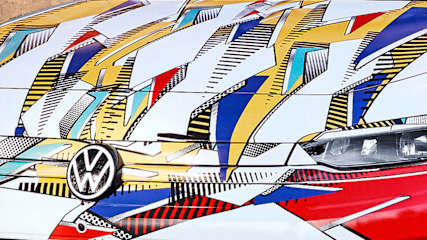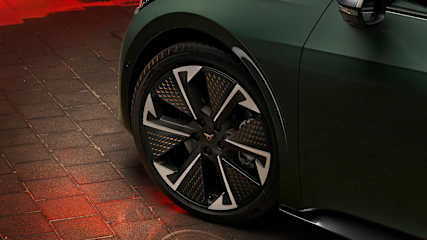Electric News

Why electric cars are the answer | Opinion
Read the article
By Dom Tripolone · 26 Dec 2025
Why EVs are a smarter option than they get credit for

New car brands in Oz during 2025
Read the article
By Jack Quick · 20 Dec 2025
2025 was certainly the year of the new car brand coming to Australia.
.jpg)
BYD plots new hybrids but there’s a catch
Read the article
By Tom White · 19 Dec 2025
BYD is plotting hybrid versions of its latest small electric cars - but here's why they might not make it to Australia.

How this brand is toppling Tesla in Europe
Read the article
By Tim Gibson · 17 Dec 2025
Volkswagen Group has become the top-selling EV brand in Europe, overtaking Tesla, through the first 10 months of 2025, according to an article in AutoNews.

Chinese brand's new model boom incoming
Read the article
By Jack Quick · 17 Dec 2025
China’s XPeng is pushing further into export markets, especially right-hand drive markets, but a new deal could see this become even easier.The Chinese carmaker has set up a partnership with Malaysian manufacturing group EP Manufacturing Berhad (EPMB) to begin localised production of vehicles in Malacca, Malaysia.The vehicles will be built using the semi-knocked down (SKD) model with mass-production currently aimed to commence during 2026.This new localised Malaysian production deal is the third time XPeng has set up overseas production collaborations. It already has deals with Magna Steyr in Austria and Handal Indonesia Motor in Indonesia, both also using the SKD production model.XPeng has noted the vehicles built at this new Malaysian production facility will be for ASEAN (Association of Southeast Asian Nations) markets, though it hasn’t explicitly said for which ones outside of Malaysia yet.Malaysia is a right-hand drive nation, like Australia, though it’s unclear whether any Malaysian-produced XPengs will be offered locally. All Australian-market XPengs are currently made in China."Establishing local production project in Malaysia is a significant milestone in XPeng's global strategy and underscores our long-term commitment to the ASEAN region,” said XPeng Vice President James Wu."EPMB's proven capabilities and shared vision make them an ideal partner."This initiative allows us to be closer to our customers, accelerate market responsiveness, and systematically introduce our intelligent technologies, driving forward our mission of 'Democratizing Technology' on a global scale."XPeng says its "sales and service network now spans 52 countries and regions worldwide".From January to November this year it claims to have delivered a total of 39,773 vehicles in overseas (non-Chinese) markets, which is up a claimed 95 per cent year-on-year.XPeng doesn’t currently report vehicle sales in Australia, though it launched locally in late 2024 and now claims to have more than 2000 vehicles on the road.The Chinese carmaker currently only offers the Tesla Model Y-rivalling G6 mid-size electric SUV, though that’s soon set to change.Late in the first quarter of 2026 XPeng will launch the updated version of the G6. It’ll bring tweaked looks, more power and torque, and a longer driving range thanks to a larger lithium iron phosphate (LFP) battery.In mid-2026 XPeng will launch the X9 electric people mover, with customer deliveries expected to commence in the second quarter of 2026.This will be a key rival to the likes of the Zeekr 009, Volkswagen ID.Buzz and LDV Mifa9. The local line-up, pricing, or specification details haven’t yet been confirmed.Lastly, in the third quarter of 2026, XPeng is expected to announce the next-generaton G9L large electric SUV for Australia. Customer deliveries will follow in the fourth quarter of 2026.Beyond these three new or updated XPeng models that are already locked-in for Australian launch during 2026, the company’s local distributor, TrueEV, has confirmed it has its eye on “two to three new global models” that are currently in “advanced development”.It’s unclear what these vehicles could be, though it offers a wide-ranging vehicle line-up. The company has previously expressed interest in bringing passenger cars like the XPeng P7 and Mona M03.

Major overhaul for popular EV
Read the article
By Chris Thompson · 16 Dec 2025
MG4 gets significant interior upgrades.

Huge EV tax break could get axed
Read the article
By Tim Gibson · 16 Dec 2025
The federal government has announced there will be a statutory review into the Electric Car Discount.

Cheap new electric car incoming
Read the article
By Jack Quick · 16 Dec 2025
Geely’s namesake brand has confirmed it’ll launch a third model to its line-up in Australia during 2026.

Will this electric hot hatch ever return?
Read the article
By Jack Quick · 15 Dec 2025
This hatch is gone for now, but is it gone for good?
.jpg)
Why VW needs this new hybrid tech
Read the article
By Tim Gibson · 15 Dec 2025
Volkswagen could be deepening its range-extender plans, pivoting its EV agenda.





